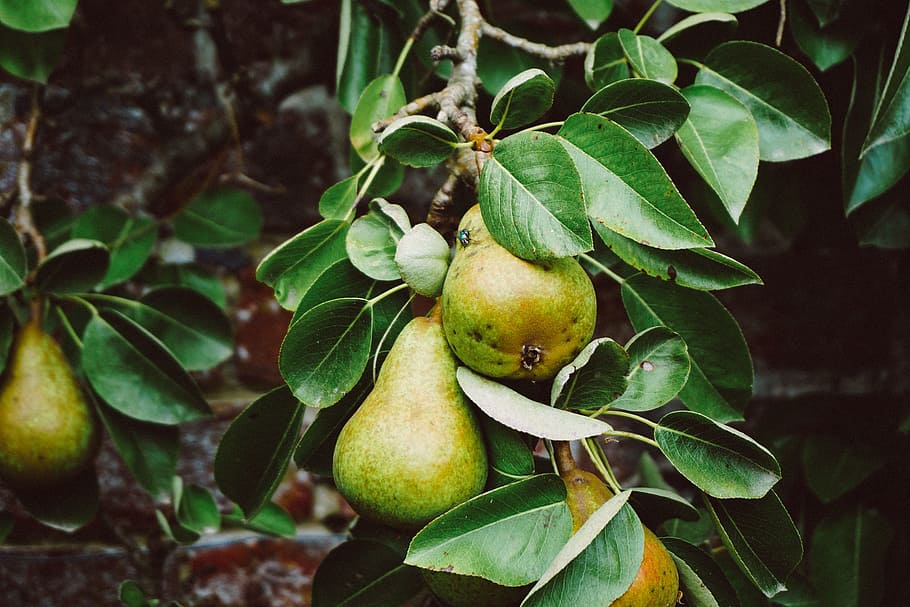| Bambinella |
| |
| Barland |
| One of the most popular Perry Pears, the Barland Cider Pear Tree has been grown in England since the 17th century. |
| Barnet |
| Gin is a rare but excellent perry variety for resistance to scab and canker. Heavy cropping medium sized fruits, green in color with a slight orange flush and almost round in appearance. Acid and tannin to taste and good keeping quality. |
| Barnett |
| A small, mid season russetted scab-resistant pear with low acids and tannins. Trees have an upright habit with compact growth. Mix with others in 'perry'. Biennial bearing; precocious and late flowering. |
| Baronne de Mello |
| A beautiful golden brown russet pear, and one of the most popular of the numerous pears developed by Belgian pear enthusiast Van Mons. It ripens late and needs a good climate for best results. |
| Bartlett |
| Bartlett, also widely known as Williams Bon Chretien, is one of the most widely-grown of all pear varieties. |
| Beierschmitt |
| Firm, tender, very juicy, highly aromatic. Skin is thin and tender, greenish-yellow to clear pale yellow when ripened, with slight russet. |
| Bella Di Guigno |
| Rich, buttery Italian pear which ripens in late June. Red blushed three inch long fruit cover this sturdy, easy to care for tree. |
| Belle Poitevine |
| French pear. Keeps better than bartlett |
| Beth |
| A modern English pear, excellent flavor, and easy to grow. |
| Beurr Bosc |
| A widely-grown French pear, with firm buttery flesh and golden russeted skin. |
| Beurr Capiaumont |
| An old Belgian pear, with a rich sweet flavor. Ripens late. Easy to grow in warm or temperate climates. |
| Beurr d'Arenberg |
| A well-known traditional French dessert pear, with a very good sweet floral flavor. |
| Beurr Duval |
| A classic Belgian late-season dessert pear, often with a red-flushed skin. Buttery melting sweet flesh. |
| Beurre Hardy |
| |
| Beurre Superfin |
| A highly-regarded traditional late-season French pear. Fruits keep until December, and the tree is productive in both cool and warm climates. |
| Beurr Hardy EMLA |
| Beurre Hardy is one of the best traditional French pears, highly regarded for its excellent flavor. |
| Black Worcester |
| England – a cooking pear that keeps well |
| Blake's Pride |
| A reliable harvest of aromatic, juicy fruit that melts in your mouth and excellent resistance to fireblight give this recent USDA introduction plenty to be proud of. Yellow-to-golden skinned with some light russetting, pears are ready to harvest in September. |
| Bon Rouge |
| |
| Bosc |
| A firm fleshed flavorful pear with a beautiful brownish russetted skin and a crunchy texture. Some prefer it to the smooth texture of Comice. Very sweet and juicy. Outstanding in the Pacific Northwest. Tastes best after storing a month or two. |
| Brandy |
| The Brandy Cider Pear Tree is prized for its attractive, russeted, and red blushed fruit. You can use it alone to make a medium-acid cider or you can blend it with Barland for a sharper flavored juice. Site and Soil: European Pears like full to 1/2 day sun and well-drained soil. |
| Bristol Cross |
| A heavy-cropping cross of two classic English pears, Bartlett and Conference. |
| Broom Park |
| A traditional English winter dessert pear. The flesh has a rich sweet flavor. |
| Buerre Superfin |
| Beurre Superfin is a high quality pear that grows especially well in warm sheltered sites. Better than average fruit quality, medium size, mid-green turning yellow with many light brown russet patches and slightly rough skin. One of the most outstanding flavoured pears with its pale, yellow, melting flesh that has a delicious scented taste. |
| Butirra Precoce Morettini |
| An amazing find, this sweet, spicy pear is large in size, yellow-green with a beautiful red blush. It ripens and sets large crops in early August. The flavor is unmatched; rich and buttery. The vigorous tree is a heavy and regular cropper. Needs a pollenizer. |
| Butt |
| An October ripening pear with moderate acids and tannins that produces fruity, slightly astringent of good quality. Fruit is small, yellow, slightly russetted with excellent keeping quality prior to milling. A vigorous tree with narrow-angled crotches. Biennial bearing and heavy producer. Needs a late blooming European Pear. |
